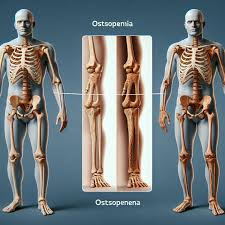Osteopenia: what is this disease, causes and signs of decreased bone density
Osteopenia is a condition of the body in which there is a decrease in bone mineral density. As a consequence of this process, there is a decrease in the strength properties of bones. Osteopenia of the lumbar spine is the most common. The main danger of this pathology is a high risk of developing osteoporosis, leading to the destruction of vertebrae. Previously, it was believed that osteopenia and osteoporosis occurs mostly in people of elderly and advanced age. But, according to statistics of the last decades, diffuse osteopenia was found in 45% of children who applied to medical institutions with bone fractures. It is specifically noted that a child with scoliosis is more likely to suffer from a decrease in bone density due to a lack of appropriate minerals.
Symptoms and stages of osteopenia
Many people do not even know what osteopenia is, what symptoms this disease has, what the danger to health is and how it should be treated. As mentioned above, this pathology means that due to mineral deficiencies in the bone tissues, the strength of the bones has decreased. To be even more clear what kind of disease hides under this name, let's dwell on the symptoms and risks in more detail.
It proceeds without any obvious, characteristic symptoms, and it can be detected only in the process of professionally performed preventive routine examination.
It should be understood that pain sensations and obvious problems with the spine, characteristic of osteoporosis, practically do not bother people whose bone strength is less disturbed. In both osteoporosis and osteopenia, bone tissue damage is primarily noted:
in the vertebrae;
in the distal forearms, which are responsible for hand mobility;
in the neck of the femur.
.jpeg)
Depending on how severe the decrease in bone density is, it is customary to determine the following stages of the disease:
Osteopenia 1 degree - at this stage, the processes of decreasing the level of mineral density in bone tissues are just beginning. Any pronounced symptoms are not observed.
Osteopenia 2 degree - there are no pronounced symptoms, but there is a high risk of fractures with minimal impact on the bones.
Degree 3 osteopenia - painful sensations may occur. If not treated appropriately, osteopenia can progress to osteoporosis.
Detect osteopenia symptoms at an early stage can only be detected with the help of laboratory tests, conducting T-criterion or Z-score tests, or using these methods in combination.
Diagnosing osteopenia
One of the effective ways to know whether a patient has osteopenic syndrome or not, is to perform densitometry - a non-invasive examination of bone tissue for mineral density according to the T-criterion. A score of -1.0 or higher is considered normal. If the indicator is between -1.0 and 2.5 - is diagnosed as osteopenia of the 1st or 2nd degree. In the case when the T-criterion is below -2.5, we are talking about a more serious disease - osteoporosis.
To check with high accuracy the decrease in bone density, a bone ultrasound densitometer is used. This type of modern diagnostic equipment can also be used to assess the degree of osteopenia by Z-scores, comparing the bone density of a healthy person with similar indicators of the patient. An obligatory condition is that both individuals must be of the same age, sex and build.
In order to detect signs of osteopenia at an early stage, it is recommended to do annual prophylactic densitometry for the following individuals:
Children between the ages of 2 and 17, as skeletal formation is taking place at this age
People whose parents have been diagnosed with osteoporosis.
Patients whose fracture was caused by a small physical load.
Patients undergoing chemotherapy or radiation therapy.
With a body weight that is less than normal.
Patients who abuse alcohol, smokers.
This is an incomplete list. Specialists advise to do densitometry on a regular basis during annual preventive examinations.
Osteopenia: treatment and prevention
It should be understood that osteopenia of the hip joint significantly increases the risk of fracture of the femoral neck, full treatment of such an injury requires expensive prosthetics and a rather painful recovery phase.
Treatment is carried out comprehensively. It consists not only of taking bone-forming drugs, calcium and vitamins of the group. Menus and dietary regimen are adjusted, changes are made in lifestyle. Health-improving physiotherapeutic procedures are prescribed.
Effective prevention of osteopenia is a healthy lifestyle, regular and proper nutrition, daily physical activity. This is especially true at the age when a strong backbone of the body is formed. It is important not to miss the problem in childhood and adolescence, as the child may later face disability.


